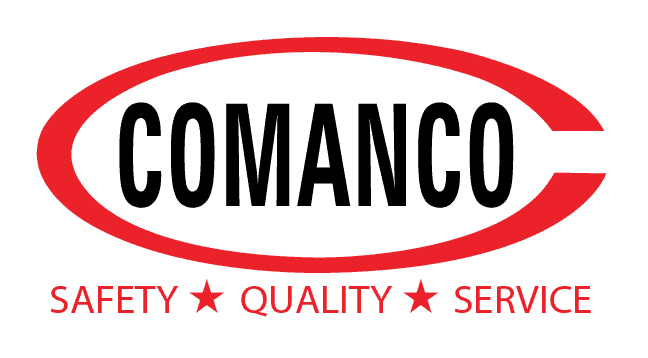COMANCO has purchased three new ‘electronic leak detection systems’ capable of detecting holes in liner, as small as 1 to 2 mm. Dr. Vladimir Nosko, CEO of Sensor Group, was on hand to demonstrate the capabilities of this new technology. Unlike conventional spark testing, the SENSOR system will work with non-conductive geosynthetic liner materials. When the wand detects a leak in the liner, the unit sounds an audible alarm alerting the operator and allowing them to zero in on the exact location of the leak, by viewing an arc. A battery pack generating 6,000 to 30,000 volts is grounded at one end with a probe that is inserted into the ground and connected to the wand at the other end. The ground beneath the liner becomes a conductor and when the conductor in the wand passes over a hole, an arc is generated completing the circuit. Despite the high voltage, the amperage is very low which means the operator is totally safe.
COMANCO’s General Super QC, Bob Lung, had a chance to test the new system in a demonstration conducted outside on a test patch of liner. Following some trial and error and coaching from Dr. Nosko, Bob was able to master the technique, identifying multiple leaks including both wedge welded and extrusion seams. The ARC Tester has some limitations as the surface being tested must be totally dry. Any moisture will absorb the current and nullify the connection. The second issue is the liner material must be as flat as possible and in contact with the conductive subgrade. Bubbles or wrinkles higher than 2 inches may not register a leak. The recommended time for optimum testing is early morning or in the cool of the evening when the liner material flattens.
SENSOR claims 94% detection rate for breaks or holes, from 1 mm to 50mm or up to two inches. Most impressive was the device’s ability to detect a leak hidden under light debris. SENSOR’s philosophy is “Zero Leakage”, a promise they have kept throughout Europe, Asia and the United Kingdom. Adoption of this new technology by COMANCO gives us an advantage over our competition as there have only been 10 of these units sold in the US, including the three we purchased.
Shortly, the new units will be deployed to the field for further testing and operation. If the demonstration witnessed today is any indicator, the rate of leaks identified during deployment will increase considerably. This does not replace air and vacuum box testing but is another tool to catch hard-to-find leaks.
Our thanks to Bob, crew and Dr. Nosko for the demonstration.




Awesome….